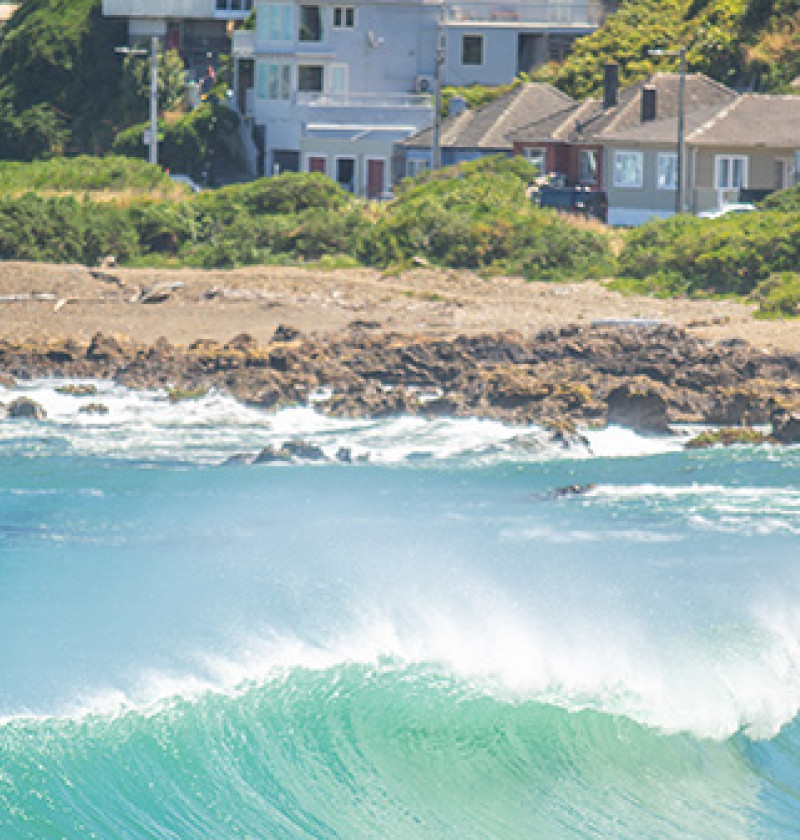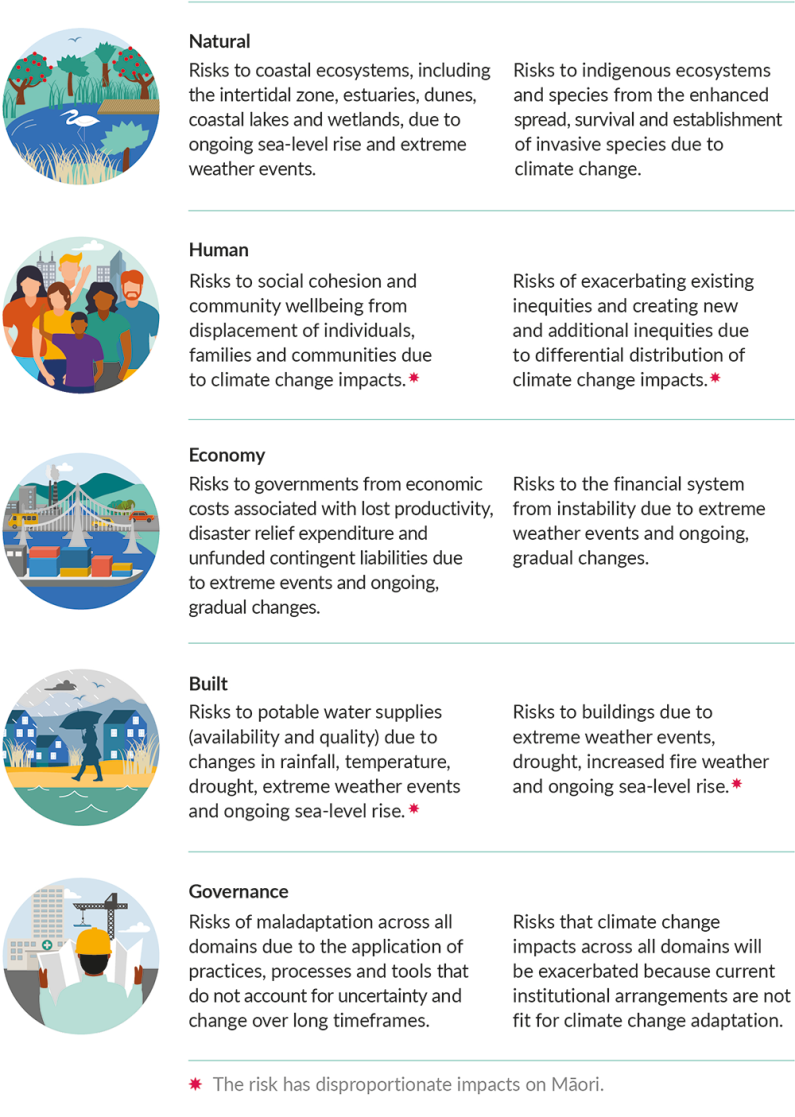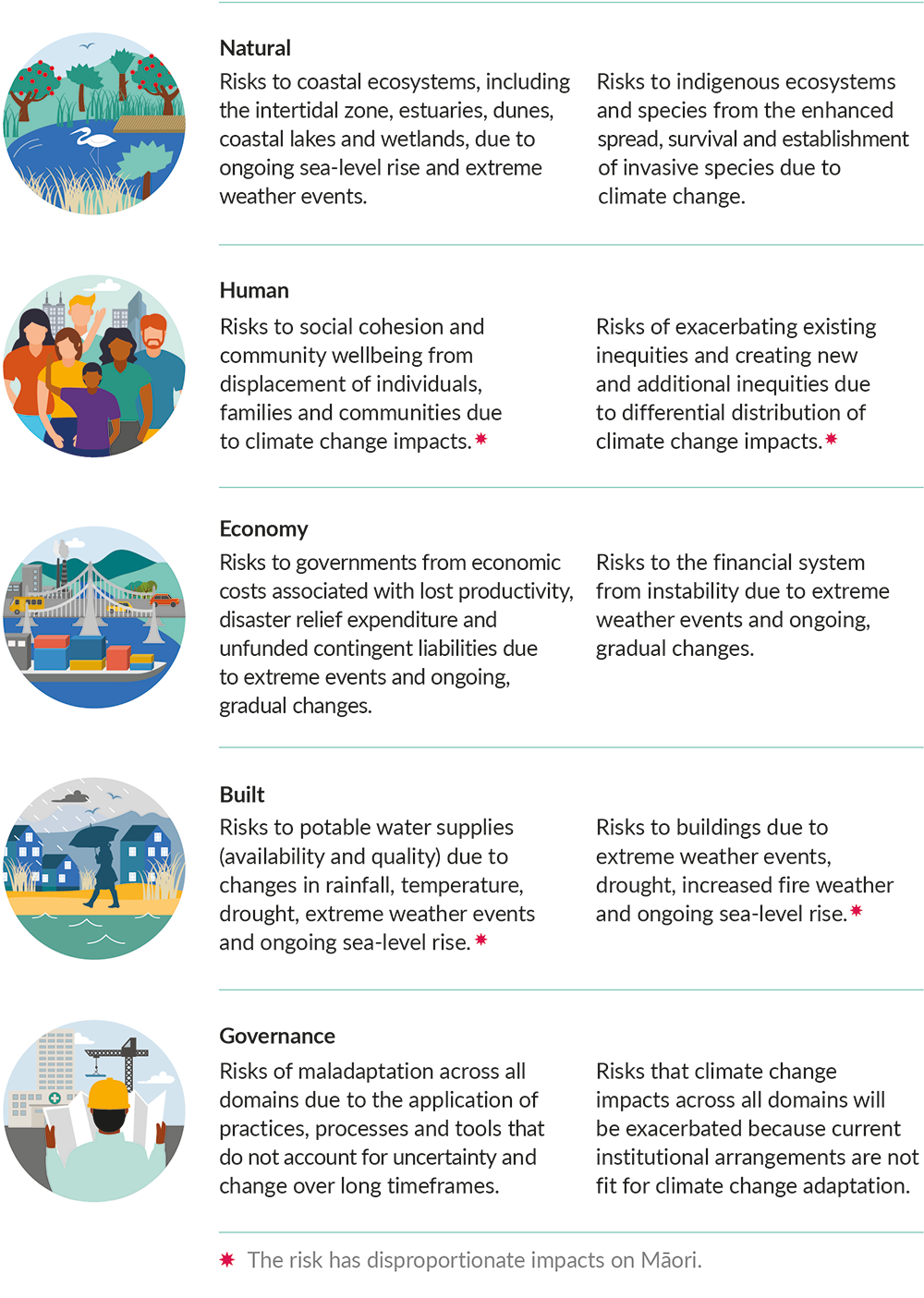Chapter 2 Our first national adaptation plan 2022–28


The plan was published in 2022. Some actions in the plan were amended in January 2025 as part of the Government's response to the Climate Change Commission's national adaptation plan progress report. These updates reflect changes in circumstances since the plan was published, and align with the Government’s climate strategy.
See the response and updated table of actions for more details.
This chapter introduces Aotearoa New Zealand’s first national adaptation plan for 2022–28.
This chapter outlines:
This national adaptation plan is the first in a series of national adaptation plans that will be developed every six years in response to national climate change risk assessments prepared by He Pou a Rangi – Climate Change Commission. It is the first step towards meeting the Government’s long‑term vision and goals for a climate-resilient Aotearoa New Zealand.
This plan is a Government-led plan for all New Zealanders that brings together existing actions and proposed future work into a multi-year work programme. Together, these set out what central government will do over the next six years to enable all levels of government, sectors and communities and all New Zealanders to better understand the risks and take action to address them.
The actions in this plan are strongly guided by the National Climate Change Risk Assessment 2020. This identifies:

Risks to coastal ecosystems, including the intertidal zone, estuaries, dunes, coastal lakes and wetlands, due to ongoing sea-level rise and extreme weather events.
Risks to indigenous ecosystems and species from the enhanced spread, survival and establishment of invasive species due to climate change.
Risks to social cohesion and community wellbeing from displacement of individuals, families and communities due to climate change impacts.*
Risks of exacerbating existing inequities and creating new and additional inequities due to differential distribution of climate change impacts.*
Risks to governments from economic costs associated with lost productivity, disaster relief expenditure and unfunded contingent liabilities due to extreme events and ongoing, gradual changes.
Risks to the financial system from instability due to extreme weather events and ongoing, gradual changes.
Risks to potable water supplies (availability and quality) due to changes in rainfall, temperature, drought, extreme weather events and ongoing sea-level rise.*
Risks to buildings due to extreme weather events, drought, increased fire weather and ongoing sea-level rise.*
Risks of maladaptation across all domains due to the application of practices, processes and tools that do not account for uncertainty and change over long timeframes.
Risks that climate change impacts across all domains will be exacerbated because current institutional arrangements are not fit for climate change adaptation.
*The risk has disproportionate impacts on Māori.

Risks to coastal ecosystems, including the intertidal zone, estuaries, dunes, coastal lakes and wetlands, due to ongoing sea-level rise and extreme weather events.
Risks to indigenous ecosystems and species from the enhanced spread, survival and establishment of invasive species due to climate change.
Risks to social cohesion and community wellbeing from displacement of individuals, families and communities due to climate change impacts.*
Risks of exacerbating existing inequities and creating new and additional inequities due to differential distribution of climate change impacts.*
Risks to governments from economic costs associated with lost productivity, disaster relief expenditure and unfunded contingent liabilities due to extreme events and ongoing, gradual changes.
Risks to the financial system from instability due to extreme weather events and ongoing, gradual changes.
Risks to potable water supplies (availability and quality) due to changes in rainfall, temperature, drought, extreme weather events and ongoing sea-level rise.*
Risks to buildings due to extreme weather events, drought, increased fire weather and ongoing sea-level rise.*
Risks of maladaptation across all domains due to the application of practices, processes and tools that do not account for uncertainty and change over long timeframes.
Risks that climate change impacts across all domains will be exacerbated because current institutional arrangements are not fit for climate change adaptation.
*The risk has disproportionate impacts on Māori.
The national adaptation plan is required to address the most significant risks identified by the risk assessment. The actions in this plan will help to address all 43 risks, as well as the risk to the telecommunications network.
The plan sets out four priorities for action:
To address specific realms of risk, this plan sets out five ‘outcome areas’ where targeted action is needed. These broadly align with the domains identified in the risk assessment:
The Government has identified a series of objectives for addressing the risks identified in the risk assessment. These objectives relate to either:
|
Area |
Code |
Objectives |
|---|---|---|
|
System-wide |
SW1 |
Legislation and institutional arrangements are fit for purpose and provide clear roles and responsibilities. |
|
SW2 |
Robust information about climate risks and adaptation solutions are accessible to all. |
|
|
SW3 |
Tools, guidance and methodologies enhance our ability to adapt. |
|
|
SW4 |
Unlocking investment in climate resilience. |
|
|
Natural environment |
NE1 |
Ecosystems which are healthy and connected, and where biodiversity is thriving. |
|
NE2 |
Robust biosecurity reduces the risk of new pests and diseases spreading. |
|
|
NE3 |
Support working with nature to build resilience. |
|
|
Homes, buildings and places |
HBP1 |
Homes and buildings are climate resilient, and meet social and cultural needs. |
|
HBP2 |
New and existing places are planned and managed to minimise risks to communities from climate change. |
|
|
HBP3 |
Māori connections to whenua and places of cultural value are strengthened through partnerships. |
|
|
HBP4 |
Threats to cultural heritage arising from climate change are understood and impacts minimised. |
|
|
Infrastructure |
INF1 |
Reduce the vulnerability of assets exposed to climate change. |
|
INF2 |
Ensure all new infrastructure is fit for a changing climate. |
|
|
INF3 |
Use renewal programmes to improve adaptive capacity. |
|
|
Communities |
C1 |
Enable communities to adapt. |
|
C2 |
Support vulnerable people and communities. |
|
|
C3 |
Support communities when they are disrupted or displaced. |
|
|
C4 |
The health sector is prepared and can support vulnerable communities affected by climate change. |
|
|
Economy and financial system |
EF1 |
Sectors, businesses and regional economies can adapt. Participants can identify risks and opportunities and take action. |
|
EF2 |
A resilient financial system underpins economic stability and growth. Participants can identify, disclose and manage climate risks. |
The actions throughout this plan are designed to achieve these objectives – and many actions will help us achieve more than one objective. Many actions are system-wide, because climate risks are interconnected and affect the broader systems of our society.
The Table of actions provides a comprehensive list of actions in this plan. The actions are mapped to the relevant risks identified by the National Climate Change Risk Assessment 2020 and the Government’s system-wide and outcome area objectives. The Table of actions also identifies the lead agency responsible for the action, the relevant Government portfolio, the status (current or proposed) of the action, timeframe and implementation measures.
Chapters 3–10 identify critical actions, supporting actions and proposed actions.
All critical and supporting actions are current, which means they have funding and mandate. Future work programmes are proposed, which means whether they go ahead, and in what form, will depend on a range of factors. These include the critical or supporting actions they depend on, the need for those actions, and funding decisions, including future budget decisions.
Adaptation planning requires a flexible approach that can accommodate change but keep us moving in the right direction. Inevitably, actions in the later years of this plan are less clearly defined. Over time, decisions will be made on which proposals to progress and when, and whether new proposals are required. These decisions will be made as the results of earlier actions become clearer.
Many of the actions in this plan are interrelated and will help address multiple risks, priorities and objectives. This reflects the interconnected nature of climate issues. It also underscores the importance of taking a flexible approach to the future work programme.
Chapter 11, the final chapter in this plan, addresses implementation of the plan.

Chapter 2 Our first national adaptation plan 2022–28
August 2022
© Ministry for the Environment